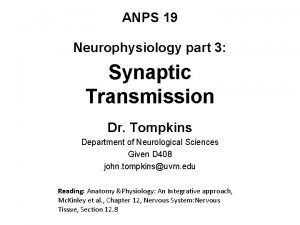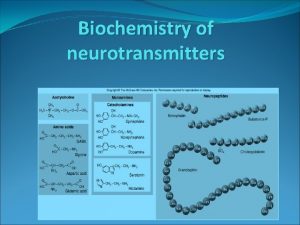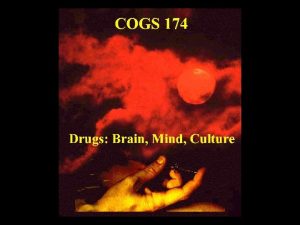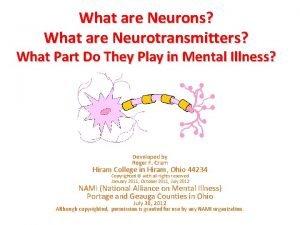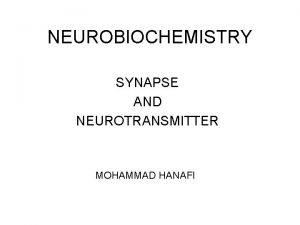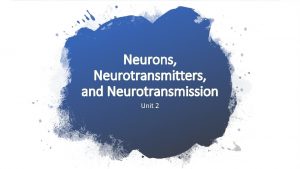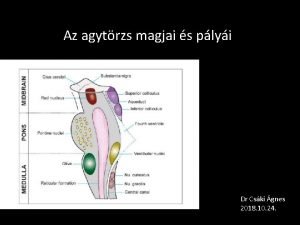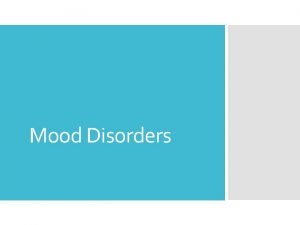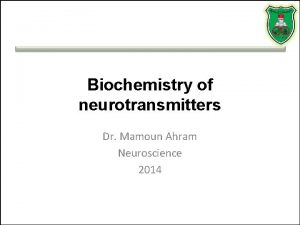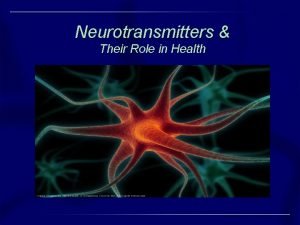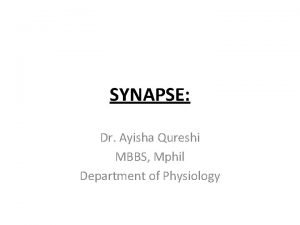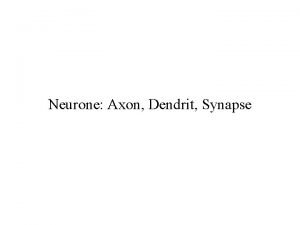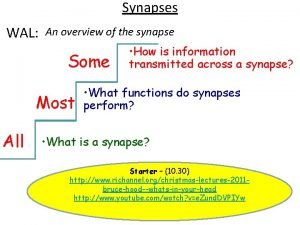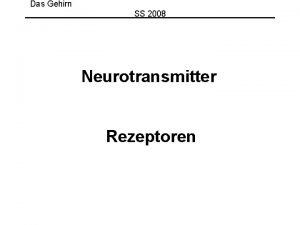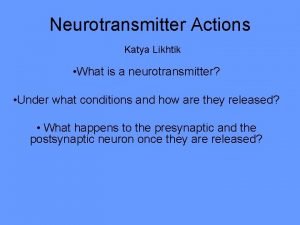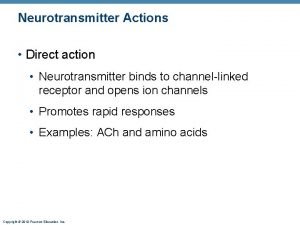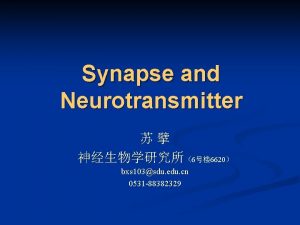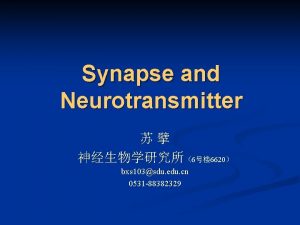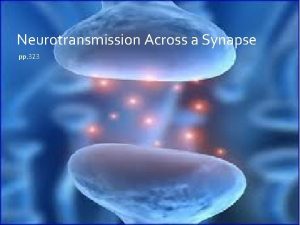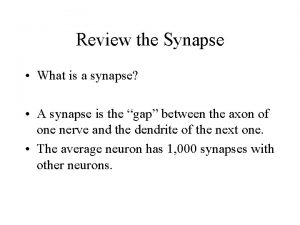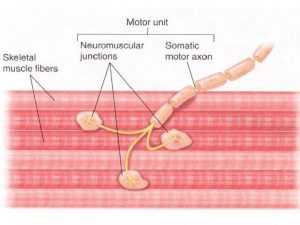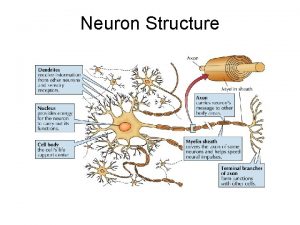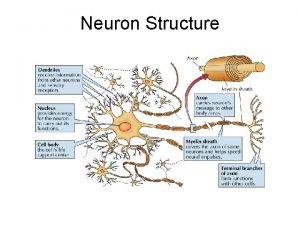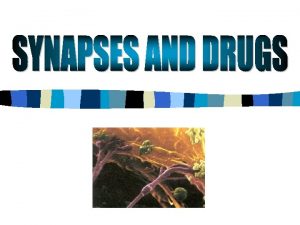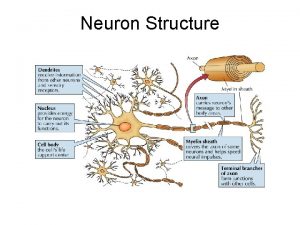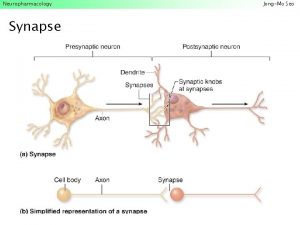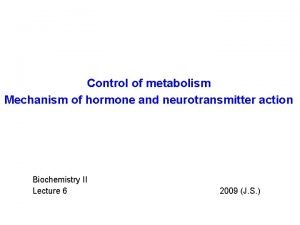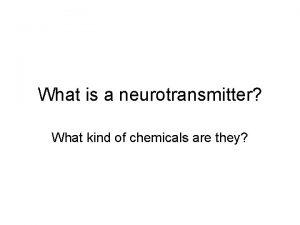NEUROTRANSMITTER S C The Synapse A synapse is




















- Slides: 20

NEUROTRANSMITTER S C

The Synapse • A synapse is the “gap” between the axon of one neuron and the dendrite of the next one. • The average neuron has 1, 000 synapses with other neurons.

1. Impulse from action potential opens ion channels for Ca++

2. The increased Ca++ concentration in the axon terminal initiates the release of the neurotransmitter (NT) by exocytosis

3. NT is released from its vesicle and crosses the synaptic cleft and attaches to a protein receptor on the dendrite

4. Interaction of NT and protein receptor open sodium ion channel on post synaptic membrane

5. After transmission the NT is either degraded by an enzyme or taken back into the presynaptic membrane by a transporter or reuptake pump

Neurotransmitters • There are dozens of different neurotransmitters (NT) in the neurons of the body. • NTs can be either excitatory (stimulate an action potential) or inhibitory (prevent an action potential by hyperpolarizing)

Discovery of neurotransmitters • 1921 – Otto Loewi – Austrian scientist • Idea for experiment came to him in a dream • 2 frog hearts in two connected chambers filled with saline solution • When first heart was slowed down by the vagus nerve, 2 nd heart slowed down shortly after • Realized that some chemical must be released to communicate with muscle cell (acetycholine) which he named vagusstoff

Neurotransmitters • The chemical must be produced within a neuron • When a neuron is stimulated (depolarized), a neuron must release the chemical • After a chemical is released, it must be inactivated. Inactivation can be through a reuptake mechanism or by an enzyme that stops the action of the chemical • The chemical must be found within a neuron • When a chemical is released, it must act on a post-synaptic receptor and cause a biological effect • If the chemical is applied on the post-synaptic membrane, it should have the same effect as when it is released by a neuron

Acetylcholine (Ach) • Excitatory • Controls muscles and regulates memory, learning, attention

Dopamine • Usually inhibitory • Produces feelings of pleasure in the brain, associated with addiction

Endorphins • Reduces pain, sense of well-being • Tends to be released when in pain, during exercise or laughing.

Epinephrine • Produced under stress – fight or flight response • Regulates focus, metabolism, and cognition

Gamma-aminobutyric acid (GABA) • The major inhibitory neurotransmitter in the brain - calming • Reduces excess stimulation, improves focus, lessens anxiety

Glutamate • The most common excitatory neurotransmitter in the brain. • Learning and memory

Norepinephrine • Fight-or-flight, attention • Usually excitatory, but is inhibitory in a few brain areas.

Serotonin • Sense of well-being and contentment, mood regulation • In the spinal cord, serotonin is inhibitory in pathways.

Drugs Interfere with Neurotransmissi on

Drugs That Influence Neurotransmitters Change in Neurotransmission Effect on Neurotransmitter release or availability Drug that acts this way increase the number of impulses increased neurotransmitter release nicotine, alcohol, opiates release neurotransmitter from vesicles with or without impulses increased neurotransmitter release amphetamines methamphetamines release more neurotransmitter in response to an impulse increased neurotransmitter release nicotine block reuptake more neurotransmitter present in synaptic cleft cocaine amphetamine block receptor with another molecule no change in the amount of neurotransmitter released, or neurotransmitter cannot bind to its receptor on postsynaptic neuron LSD caffeine NIH Publication No. 00 -4871
 Anatomy of the synapse
Anatomy of the synapse Part of nervous system
Part of nervous system Neurotransmitter of somatic nervous system
Neurotransmitter of somatic nervous system Skeletal muscle neurotransmitter
Skeletal muscle neurotransmitter Inhibitory neurotransmitters
Inhibitory neurotransmitters Life cycle of neurotransmitter
Life cycle of neurotransmitter Neurotransmitter
Neurotransmitter 4 neurotransmitters
4 neurotransmitters Kandel
Kandel Chemical synapse
Chemical synapse Neurotransmitter
Neurotransmitter Whats a neurotransmitter
Whats a neurotransmitter Tr tectospinalis
Tr tectospinalis Mood...
Mood... Small-molecule neurotransmitters
Small-molecule neurotransmitters Myosin and actin
Myosin and actin Inhibitory neurotransmitter
Inhibitory neurotransmitter Chemical transmission
Chemical transmission Ipsp vs epsp
Ipsp vs epsp Axonhügel
Axonhügel Functions of a synapse
Functions of a synapse
